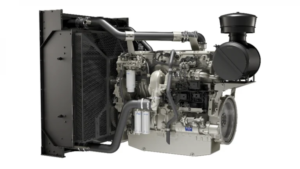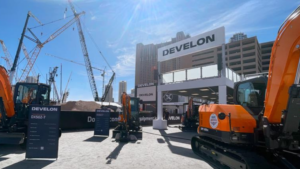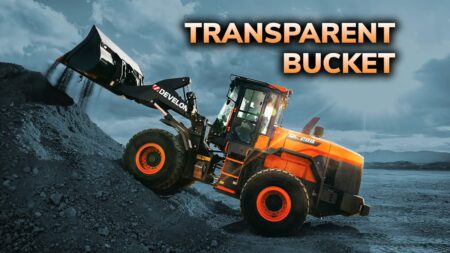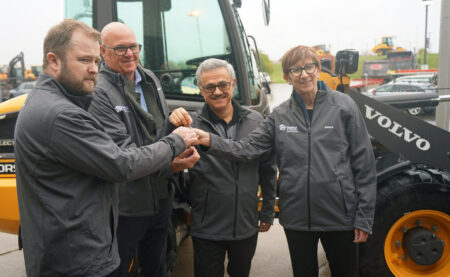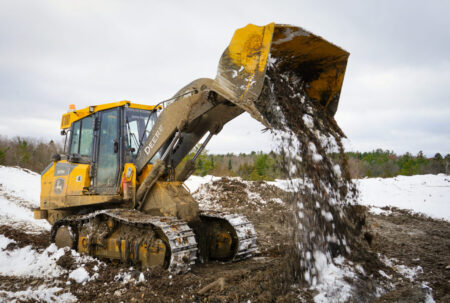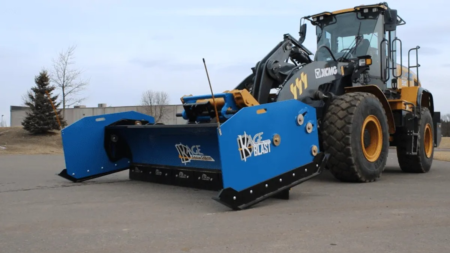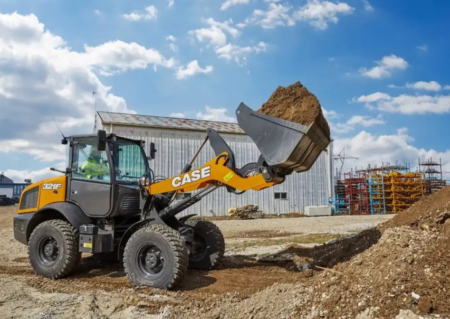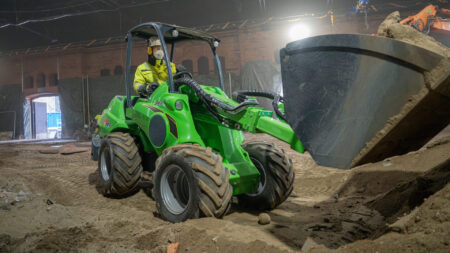The right CTL can go toe-to-toe with skid steers for snow removal
By Buck Storlie, ASV Product Manager
Contractors have a lot to consider when looking for a snow-worthy compact track loader.
The machine’s ground clearance, track surface contact, weight distribution and more can have a huge impact on performance, productivity and return on investment.
Careful consideration of the machine’s undercarriage, the desired application, ROI possibilities and comfort could lead to a track loader that performs year-round.
The common perception is that a wheeled machine fares better for winter maintenance, and it’s often true with many track loaders. It’s why many CTLs are parked for the winter while skid steers keep working.
However, it is possible to choose a compact track loader that not only excels in snow but performs as well as, or better, than skid steers.
Starting at the bottom
Choosing a compact track loader for winter maintenance works best from the ground up by starting with the tracks.
A variety of track options exist, including modern designs that feature extra length and width and an extremely effective bar-style tread to achieve maximum contact with the ground.
The extra ground contact maximizes traction on snow, ice and slush, running contrary to a perception that an aggressive track pattern is required for traction in winter applications. Many manufacturers offer dedicated snow tracks that may improve performance for some track loaders, but operators will see a higher return on investment by selecting a machine with tracks meant for year-round use.
Suspension systems may also improve traction by keeping the track in contact with the ground. Look for a dual-level system that features independent torsion axles between the undercarriage and machine, as well as bogie wheels that flex with the track. This combination minimizes vibrations to the machine and maximizes ground contact for extra traction. For example, when loaders without independent torsion axles engage the bucket, the front part of the tracks can lift off the ground, reducing traction by leaving only the back end of the tracks to push the loader. In the same situation, independent torsion axles will push the tracks downward to maintain maximum ground contact.
Purpose-built track loaders
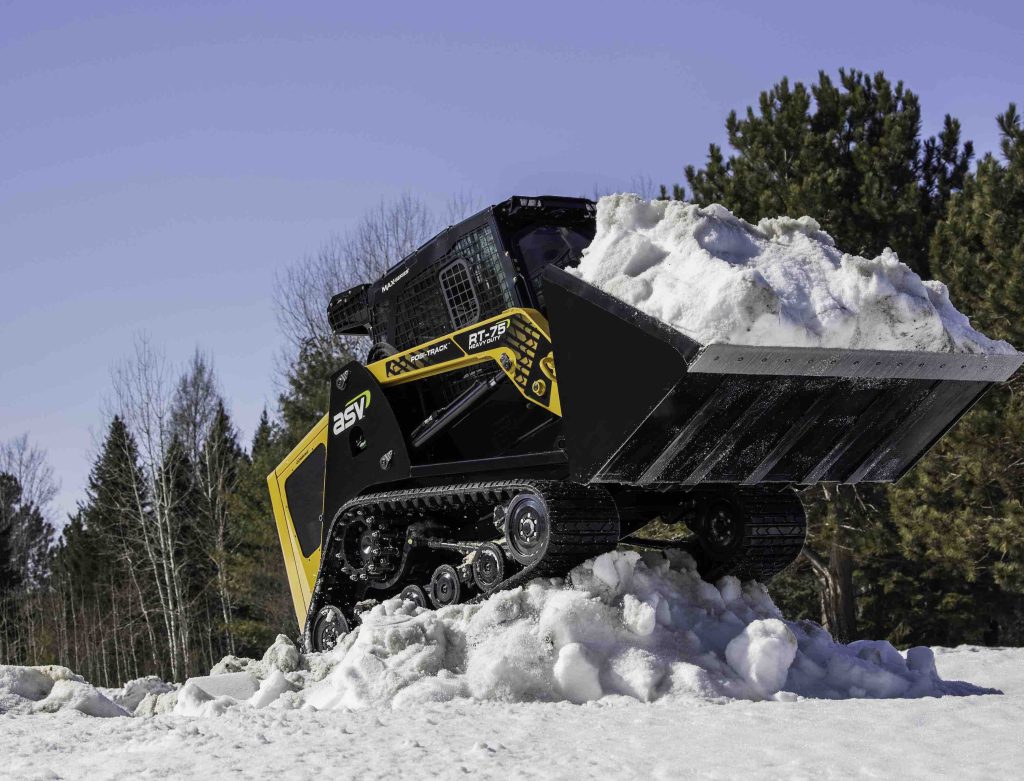
A purpose-built track loader features optimal weight distributions compared to models converted from skid steers. Loaders converted from skid steers are often too back heavy, affecting stability on slopes and reducing overall performance. A back-heavy machine may sink and get stuck in deep snow. On ice, traction and pushing force may be reduced due to uneven weight distribution. Look for a track loader with a 50/50 weight balance that spreads the machine’s weight evenly and allows for greater traction and pushing power.
Track bogie wheels also play a role in weight distribution and, therefore, traction in snow. Most track loaders feature a handful of bogie wheels in contact with the ground. Consider choosing a purpose-built track loader, such as all-rubber track models, which can feature as many as four times more ground contact points than steel-embedded models.
Don’t get stuck
The combination of even weight distribution and increased track surface area improves flotation and provides the ability to virtually drive on top of the snow, which is like the concept of snowshoes. A machine with a higher ground pressure is more likely to sink and get stuck.
Ground pressure on a mid-sized all-rubber track machine, for example, can be about 4 psi while a similarly sized steel-embedded rubber track machine may be 5.5 psi. Loaders with a low ground pressure can drive up snow piles, giving operators the ability to stack snow higher before needing to start a new pile.
Finally, a loader with high ground clearance has year-round benefits. The greater the distance between the bottom of the machine and the ground, the less likely it is to get stuck in snow or other obstacles. It can also improve speed by reducing belly drag. Some purpose-built compact track loaders achieve ground clearances as high as 38 cm.
Consider size for snow removal
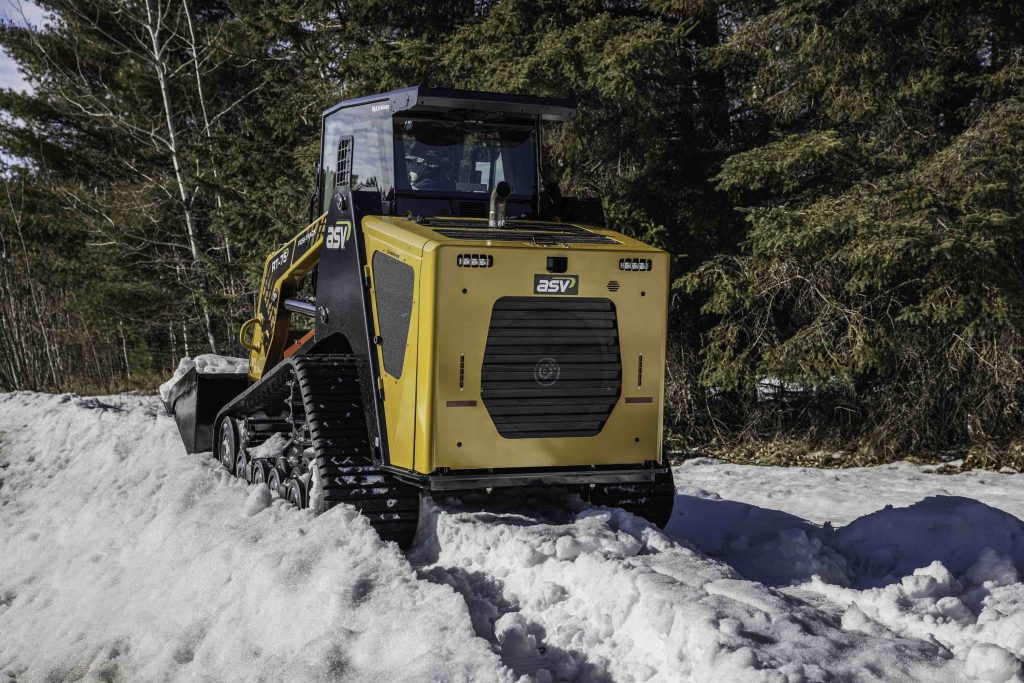
When selecting a CTL, contractors should think about what machine characteristics will fit their most common jobs.
Overall machine size is a big consideration. Many jobs would be suited to a mid-sized model, but sidewalks and alleyways may call for small sit-in compact track loaders. Small loaders allow access to tight areas that may otherwise have required manual shovelling, snow blowers or other open-air equipment.
Larger spaces such as parking lots naturally call for the largest track loaders. Also look at lift height and whether the desired loader will be able to load dump trucks.
You may also like:
Travel speed is another consideration. The fastest track loaders on the market use internal drive sprockets with replaceable steel rollers that fit with molded rubber lugs to move all-rubber tracks. The system reduces friction and therefore improves speed. It also eliminates direct wear between rollers and track lugs. Plus, individually replaceable sleeves mean operators don’t need to change out the entire sprocket when rollers are worn down.
Don’t forget about comfort. A cold uncomfortable cab could affect employee retention for a contractor and higher fatigue for an owner-operator. Look for sealed, all-weather cabs with heating and cooling. Added features such as Bluetooth, cupholders and radio can also enhance the user experience.
Cost of ownership
Like with any equipment purchase, it’s important to evaluate potential cost of ownership and return on investment. Selecting a track loader that excels in snow clearing is an ROI benefit because the machine can be used during the winter months instead of being parked.
The characteristics that make a loader ideal for snow also translate perfectly to operating on soft surfaces in spring, summer and fall applications, such as landscaping, general construction and agriculture.
In addition to selecting a machine with tracks that do not need to be changed with the season, look for other characteristics that promote year-round use. Similar to how many manufacturers offer specific snow tracks, it isn’t uncommon to need to switch out a loader’s fluids and lubricants with the seasons. Either that, or a manufacturer may charge for a winter package. Evaluate whether any of the loader options come standard with all-season fluids tested to handle both high and low ambient temperatures. Some manufacturers offer fluids and lubricants optimized for their equipment, allowing high performance at temperatures ranging from -35 C to 48 C. Other standard features to look for include engine block heaters and full temperature range batteries.
Maintenance and upkeep are another cost consideration. Many loaders feature an enclosed tub design that may trap snow that is difficult to remove. For ease of cleaning, look for a single-rail, open-undercarriage style compact track loader.
This design leaves most components exposed, creating a self-cleaning undercarriage where material naturally falls out rather than getting trapped. This extends component life and makes clearing ice and snow out of the undercarriage a non-issue.
Year-round performance
Not all compact track loaders are created equal. Quite a few track loaders are often parked for the winter, but with careful consideration, it’s possible to choose a machine that will fit right in with the skid steer loaders that are clearing snow.
Consider machine characteristics like ground clearance, weight distribution, surface contact and overall ROI potential. Taking the time to look for an all-season machine means year-round profits and productivity.
Read the full article here


